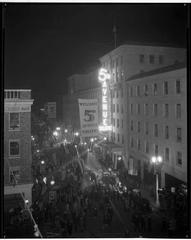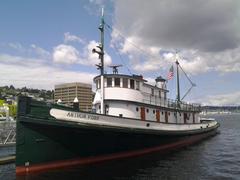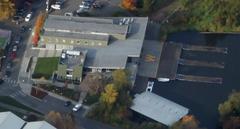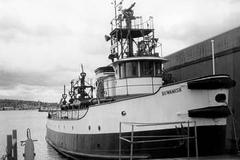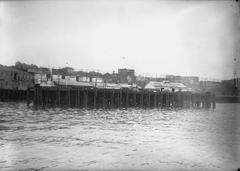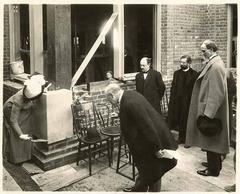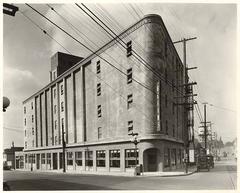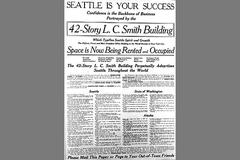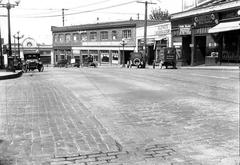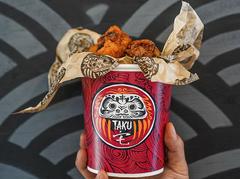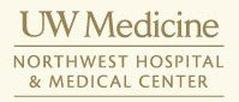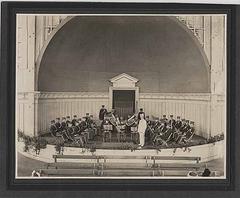
Port of Seattle Visiting Hours, Tickets, and Travel Guide
Date: 03/07/2025
Introduction
The Port of Seattle is a vibrant maritime gateway, seamlessly blending indigenous heritage, a storied maritime legacy, and modern economic vitality. Established in 1911, it stands on the ancestral lands of the Coast Salish peoples, notably the Suquamish and Duwamish Tribes, who have called the region home for millennia (HistoryLink; Visit Seattle). Today, the port is not only a hub for global trade and one of the United States’ leading cruise embarkation points, but also a dynamic destination for visitors seeking culture, history, and waterfront excitement (CruiseMapper).
This comprehensive guide provides essential information for travelers, including historical highlights, visiting hours, ticketing procedures, accessibility, transportation, nearby attractions, and practical travel tips. Whether you’re embarking on an Alaska cruise, exploring Seattle’s historic waterfront, or simply soaking up the city’s maritime atmosphere, let this guide help you make the most of your Port of Seattle experience.
Table of Contents
- Indigenous Foundations and Early Maritime Activity
- Growth as a Port Town and the Klondike Gold Rush
- The Push for Public Ownership: Creation of the Port of Seattle
- Infrastructure Expansion and Modernization
- Postwar Growth and Containerization
- Recreational and Cultural Revitalization
- The Port Today: Sustainability, Innovation & Visitor Information
- Maritime Industry and the Working Waterfront
- Cruise Industry Significance
- Innovation, Sustainability, and the Blue Economy
- Regional and Global Trade Hub
- Tourism and Visitor Experience
- Practical Visitor Tips
- Explore More and Stay Connected
Indigenous Foundations and Early Maritime Activity
The Port of Seattle occupies lands that have been central to Coast Salish cultures for thousands of years (HistoryLink; Visit Seattle). The Suquamish and Duwamish Tribes have long fished, hunted, and gathered along Elliott Bay, maintaining a deep spiritual and cultural connection to the region. In 2025, the Port and Suquamish Tribe formalized a partnership to advance environmental stewardship and protect these resources for future generations (South Seattle Emerald).
European contact began in 1792. By the 1850s, settlers had established a sawmill and wharf at what is now Pioneer Square, setting the stage for Seattle’s evolution into a commercial port (HistoryLink).
Growth as a Port Town and the Klondike Gold Rush
Seattle’s strategic location on Puget Sound powered its early economic development, with Henry Yesler’s sawmill in the 1850s marking a turning point (HistoryLink). The city’s fortunes soared during the Klondike Gold Rush (1897–1898), when it became the main outfitting point for prospectors heading to Alaska. The flood of commerce and people transformed Seattle into a bustling port town (Visit Seattle City).
The Push for Public Ownership: Creation of the Port of Seattle
By the early 20th century, Seattle’s waterfront was a patchwork of privately controlled docks and rail lines, leading to monopolistic practices and inefficiencies (Wikipedia). Driven by public frustration and progressive reform, King County voters approved the creation of the Port of Seattle in 1911 (HistoryLink). Governed by elected commissioners, the Port was tasked with developing harbor facilities for public benefit, with early projects including Fishermen’s Terminal and piers at Smith Cove (HistoryLink).
Infrastructure Expansion and Modernization
The Port’s early years saw major infrastructure projects, such as the creation of Harbor Island—then one of the world’s largest artificial islands—and the completion of the Lake Washington Ship Canal in 1917, which bolstered Seattle’s maritime connectivity (HistoryLink). Federal investment during the Great Depression led to the construction of a seawall and Alaskan Way, stabilizing and modernizing the city’s waterfront.
Postwar Growth and Containerization
Following World War II, the Port continued to modernize, notably with the opening of Seattle-Tacoma International Airport (Sea-Tac) in 1947 (HistoryLink). The 1960s brought containerization, as new facilities like Pier 46 and upgrades to Harbor Island positioned Seattle among the busiest ports on the West Coast (HistoryLink).
Recreational and Cultural Revitalization
From the 1970s onward, the waterfront shifted toward recreation and culture. Historic piers were transformed into shops, restaurants, and attractions such as Pike Place Market, Myrtle Edwards Park, Waterfront Park, and the Seattle Aquarium (HistoryLink). The 1962 World’s Fair introduced the Space Needle, cementing Seattle’s modern identity. The Bell Street Pier, opened in 2000, established Seattle as a key cruise embarkation point (Visit Seattle City).
The Port Today: Sustainability, Innovation & Visitor Information
Today, the Port of Seattle is a multifaceted economic driver, encompassing cargo terminals, cruise ship berths, marinas, and Sea-Tac Airport (Port of Seattle). It is home to the largest and fastest-growing cruise port on the West Coast, with nearly 300 ship calls each season (Washington Ports).
Visiting Hours & Accessibility
- Waterfront Attractions: Public sites like Pike Place Market and the Seattle Aquarium generally open from 9 AM to 6 PM, with seasonal variations. Confirm hours on individual attraction websites.
- Cruise Terminals: Bell Street Pier (Pier 66) is open 5 AM–10 PM; Smith Cove Terminal (Pier 91) is open 5 AM–9 PM. Access to terminals is typically restricted to cruise passengers and staff during embarkation/debarkation.
- Accessibility: The Port and its attractions offer wheelchair access, assistive listening devices, and other accommodations. Check individual venues for detailed accessibility info.
Tickets & Tours
- Harbor Cruises & Tours: Tickets for harbor cruises, whale-watching, and Alaska-bound cruises are available online or at pier-side ticket offices.
- Guided Tours: Walking tours focusing on the Port’s history, indigenous heritage, and sustainability are offered by local organizations.
Nearby Attractions & Photo Opportunities
- Pike Place Market: Experience local seafood, crafts, and Seattle’s famous fish-throwing vendors.
- Space Needle: Iconic landmark with panoramic city and waterfront views.
- Waterfront Parks: Myrtle Edwards Park and Waterfront Park offer scenic walks and photo spots.
- Pioneer Square: Seattle’s oldest neighborhood, rich in architecture and history.
Special Events & Guided Tours
The Port and partner organizations host maritime festivals, cultural celebrations, and environmental programs throughout the year. Check the Port’s official events calendar for current schedules.
Maritime Industry and the Working Waterfront
The Port is integral to Seattle’s identity and economy. Fishermen’s Terminal, opened in 1914, is a historic hub for the North Pacific Fishing Fleet and a vibrant public destination with seafood markets and the Seattle Fishermen’s Memorial (Port of Seattle). Commercial fishing at the port supports thousands of jobs and over $1 billion in annual economic activity (Port of Seattle Economic Impact).
Cruise Industry Significance
Seattle’s cruise sector has boomed since 1999, now generating nearly $1.2 billion in annual revenue and supporting over 5,000 jobs (CruiseMapper). Cruise terminals at Pier 66 and Pier 91 are conveniently located for exploring downtown Seattle, and the Port’s complimentary Port Valet service streamlines baggage transfers between ships and the airport (Port of Seattle Blog). Most cruises run April–October, primarily to Alaska, with itineraries offered by leading cruise lines (The Points Guy).
Innovation, Sustainability, and the Blue Economy
The Port is a leader in maritime innovation and environmental stewardship. The new Maritime Innovation Center at Fishermen’s Terminal is designed to meet the world’s most rigorous sustainability standards, supporting green maritime business and technology (Port of Seattle). All cruise berths are equipped with shore power, dramatically reducing ship emissions, with mandatory use for all homeported vessels starting in 2027 (State of WA Tourism).
Regional and Global Trade Hub
As the fifth largest container port in the U.S., the Port of Seattle is a linchpin in global supply chains, especially for trade with Alaska and Asia (City-Data). Its cargo operations, merged with the Port of Tacoma under the Northwest Seaport Alliance, rank among the top ten in North America (CruiseMapper).
Tourism and Visitor Experience
The Port’s central location makes it an ideal base for exploring Seattle’s top attractions, including the Space Needle, Chihuly Garden and Glass, and the Seattle Aquarium (CruisePorts.co). Facilities are designed with accessibility in mind, and services like Port Valet and streamlined embarkation enhance the visitor experience (Port of Seattle).
Practical Visitor Tips
Getting to the Port of Seattle
- By Air: SEA Airport is 13 miles south of downtown. Reach the port via taxi, shuttle, or Link Light Rail (approx. 40 minutes) (Port of Seattle).
- By Car: Parking is available at both cruise terminals. Reserve in advance, especially during cruise season (Prof. Cruise).
- Public Transit: King County Metro buses, Link Light Rail, and Monorail serve the waterfront. A free waterfront shuttle operates seasonally (Prof. Cruise).
Navigating the Port and Cruise Terminals
- Pier 66 (Bell Street Pier): Downtown, open 5 AM–10 PM.
- Pier 91 (Smith Cove Terminal): North of downtown, open 5 AM–9 PM.
- Luggage Storage & Port Valet: Available at both terminals; Port Valet transfers luggage to SEA Airport for eligible cruise passengers.
SEA Visitor Pass Program
Non-travelers can access post-security areas of SEA Airport with the SEA Visitor Pass. Apply online up to seven days ahead; government-issued ID required (Port of Seattle; Gate to Adventures).
Security, Identification, and Accessibility
- Security: Standard screening at terminals and airport (FlySEA).
- ID Requirements: REAL ID required for domestic flights after May 7, 2025; passports for international travel (Port of Seattle).
- Accessibility: Wheelchair services and accessible facilities available throughout the port.
Local Transportation and Getting Around
- Taxis/Rideshares/Shuttles: Serve airport, hotels, and terminals.
- Link Light Rail: Connects airport, downtown, and University of Washington.
- Walking/Biking: The waterfront is pedestrian- and bike-friendly (The Broke Backpacker).
Nearby Attractions and Activities
- Pike Place Market: Iconic food and crafts market.
- Seattle Aquarium: Family-friendly marine exhibits.
- Seattle Great Wheel: Panoramic views of the bay.
- Harbor Cruises: One-hour narrated tours of the port and skyline (Events12).
Dining and Shopping
Sample fresh seafood, local favorites, and unique gifts at the waterfront’s many eateries and shops. Chinatown-International District and Westlake Center offer additional dining and retail options (The Points Guy).
FAQ: Common Visitor Questions
What are the Port of Seattle visiting hours?
Most public attractions are open 9 AM–6 PM; cruise terminals 5 AM–10 PM (Pier 66) and 5 AM–9 PM (Pier 91). Hours may vary by business or season.
How can I get tickets for cruises and tours?
Purchase cruise tickets through cruise line websites or authorized agents; harbor tours and events can be booked online or at ticket offices.
Is the Port accessible for people with disabilities?
Yes, with wheelchair access, assistive services, and accessible parking at major sites.
Are there guided tours?
Yes, seasonal walking tours and harbor cruises are available. Visit official sites for schedules.
Where can I park?
Reserved parking is available at both cruise terminals; SEA Airport offers additional parking.
What are key nearby attractions?
Pike Place Market, Seattle Aquarium, Space Needle, and the revitalized waterfront.
Safety, Security, and Practical Tips
- Book parking and Port Valet early, especially during cruise season.
- Arrive early for security and check-in.
- Dress in layers and bring rain gear for Seattle’s variable weather.
- Use public transit for sustainability and convenience.
- Free Wi-Fi is available at SEA Airport and many waterfront venues.
The Port’s Role in Seattle’s Identity
The Port of Seattle has shaped the city’s growth from a frontier settlement to a global gateway. Its history is inseparable from the broader story of Seattle’s development, public ownership ideals, and environmental stewardship. Ongoing partnerships with Indigenous communities and progressive sustainability measures ensure the port remains both a vital economic engine and a welcoming destination (South Seattle Emerald; Visit Seattle).
Visuals and Interactive Resources
- Virtual Tours: Explore Pike Place Market and Seattle Aquarium online.
- Maps & Media: Interactive maps and high-quality images are available on the Port of Seattle website.
Call to Action
Ready to plan your Port of Seattle adventure? Download the Audiala app for real-time updates, ticket booking, and exclusive travel tips. For the latest news, events, and more, follow official channels and check related articles on Seattle’s waterfront attractions and cruise experiences.
Summary and Final Tips
The Port of Seattle is a cornerstone of the Pacific Northwest, connecting history, commerce, and culture along its dynamic waterfront (HistoryLink; CruiseMapper). Whether you’re cruising to Alaska, exploring local markets, or simply enjoying the city’s maritime heritage, you’ll find accessible facilities, convenient transportation, and a wealth of attractions. Plan ahead, consult official resources, and take advantage of accessibility services for a smooth, enriching experience. Discover why the Port of Seattle continues to be a vital and cherished gateway for travelers and locals alike (Port of Seattle Official Website; Visit Seattle).
References and Further Reading
- HistoryLink, 2025, Port of Seattle History
- Visit Seattle, 2025, Visitor Information
- South Seattle Emerald, 2025, Suquamish Tribe and Port Partnership
- HistoryLink, 2025, Creation of Port of Seattle
- CruiseMapper, 2025, Port of Seattle Cruise Statistics
- Port of Seattle, 2025, Maritime Innovation Center News
- City-Data, 2025, Seattle Economy and Port Data
- The Points Guy, 2025, Seattle Cruise Port Guide
- State of WA Tourism, 2025, Waterfront Redevelopment and Sustainability
- Prof. Cruise, 2025, Seattle Cruise Guide
- Port of Seattle, 2025, SEA Visitor Pass Program
- Visit Seattle City, 2025, Seattle World’s Fair and Landmarks
- CruisePorts.co, 2025, Seattle Cruise Terminals
- Post Alley, 2024, Port of Seattle History Revision
- FlySEA, 2025, SEA Airport Security Information
- Gate to Adventures, 2025, SEA Visitor Pass Guide
- Events12, 2025, Seattle Events and Festivals
- The Broke Backpacker, Seattle Itinerary










